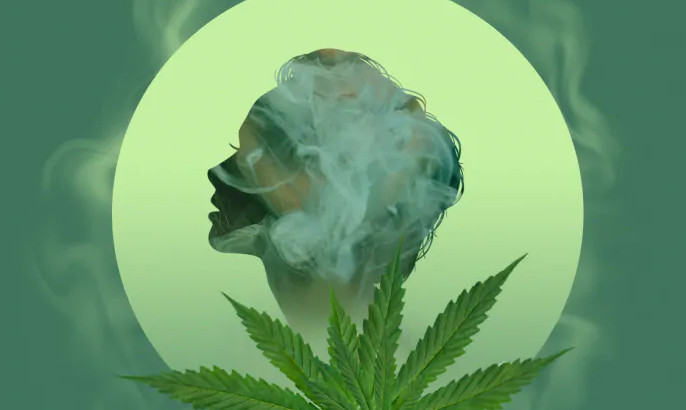Your body produces cannabinoid naturally. When you smoke weed, you’re in cannabinoid overload
The legalization of cannabis this week prompted an outpouring of questions from Canadians wondering everything from how and where to buy it, whether they can grow it and what to do when crossing an international border.
But at a public Q&A in Edmonton this week, a University of Alberta professor talked about a very different question: “What is weed doing to my brain?”
Martin Davies, an associate professor of pharmacology, said it’s a question scientists first started asking in the mid-80s.
“A bunch of scientists thought it was really strange how this plant can affect the way our brains work, and the way we experience the world and make us feel hungry and things like this,” Davies told CBC’s Radio Active on Friday.
Answering that question led researchers to some remarkable new findings about the brain and the body.
Cannabis gives, and the brain receives
Inside the brain are something called cannabinoid type 1 (CB1) receptors. When you smoke cannabis, an acid in the plant is transformed into a delta-9 tetrahydrocannabinol (or, as most people call it, THC).
The THC physically binds to the CB1 receptors in a person’s brain.
“We call it the cannabinoid receptor because it receives molecules of cannabinoids that are circulating in our blood and get to our brain,” Davies said.
- “When THC physically binds to this target, this receptor, it really inhibits the ability of neurons to talk to each other. And that explains why you get some sedation and why there’s a bit of memory loss and some of the other things that are common to everyone’s experience of using these plants.”
The bigger picture
Davies said that discovery led to more questions — and more research.
“At that point, the question was still, ‘Why do our brains have receptors for a plant chemical?’ It made no sense,” he said.

Credit: www.cbc.ca
Researchers starting looking around and discovered receptors everywhere in the animal kingdom — inside the brains of fish, reptiles, birds, mammals and more, Davies said. That was a huge clue that these receptors played an important role in brain function.
And that led to the discovery of the endocannabinoid system, a network that affects key functions of the human body, including how a person feels, moves and reacts.
In other words, in trying to figure out why pot makes people high, researchers “basically stumbled onto this entirely new pathway that had yet to be discovered.”
System interrupted
Davies said most people realize cannabis plants make cannabinoids but don’t realize their own brain produces them, too.
The brain uses the endocannabinoid system to fine-tune how neurons talk to each other. If the system gets disrupted, your brain doesn’t work as well as it could.
That’s what cannabis does.
“When you smoke or use a cannabis product, the cannabinoids that are found in those plants basically hijack this system,” he said.
“It doesn’t necessarily mean that it’s dangerous (for the brain). It just means that it’s going to greatly affect the normal functioning.”
That disruption manifests itself in what Davies describes as “symptoms” of being high: the munchies, the euphoria, the effect on memory.
Cannabis chemistry
Most people know cannabis contains THC and the non-psychoactive cannabidiol (CBD). But there are hundreds of different chemicals inside the plant, according to Davies.
Customers at cannabis stores this week may have wondered about strains that promise to make you feel anything from energized to relaxed; Davies said those variations are the result of different chemical ratios.
“Clearly these differences do give users a different experience, we’re just not certain exactly how that happens,” Davies said. “We know that different plants have different amounts and different ratios and that’s influencing the experience that people have.”
Body language
Davies said the audience at this week’s Q&A event at Telus World of Science had plenty of questions about other parts of the body.
“I got everything from, ‘Do I know anything about exercising while high?’ — and the answer was no, I’ve never heard about that before.”
People are also curious about the effects of pot on fertility and reproduction. That’s an area that Davies hopes will begin to be more thoroughly researched.
A man’s sperm count is negatively impacted by cannabis, he said, but research to date hasn’t conclusively determined impacts on female fertility.
- It is known, however, that THC will enter a fetus’s blood system when pregnant women take cannabis to deal with morning sickness, he said. For nursing mothers, he said, the levels of THC in breast milk are eight times what is in the mother’s bloodstream.
And, not surprisingly, a lot of questions are asked about the likelihood of overdosing on cannabis.
“I teach a toxicology course,” Davies said. “And one of the introductory things that we always cover is that poison is all about dose. You can take the most benign substance and at a high enough dose it can cause you harm.”
Davies said the biggest risk of cannabis will likely manifest with novice users who don’t have enough knowledge about THC levels of their product or which cannabinoid profile works best for them.
“With a safe dose,” he said, “these risks can be minimized.”
Credit: www.cbc.ca






